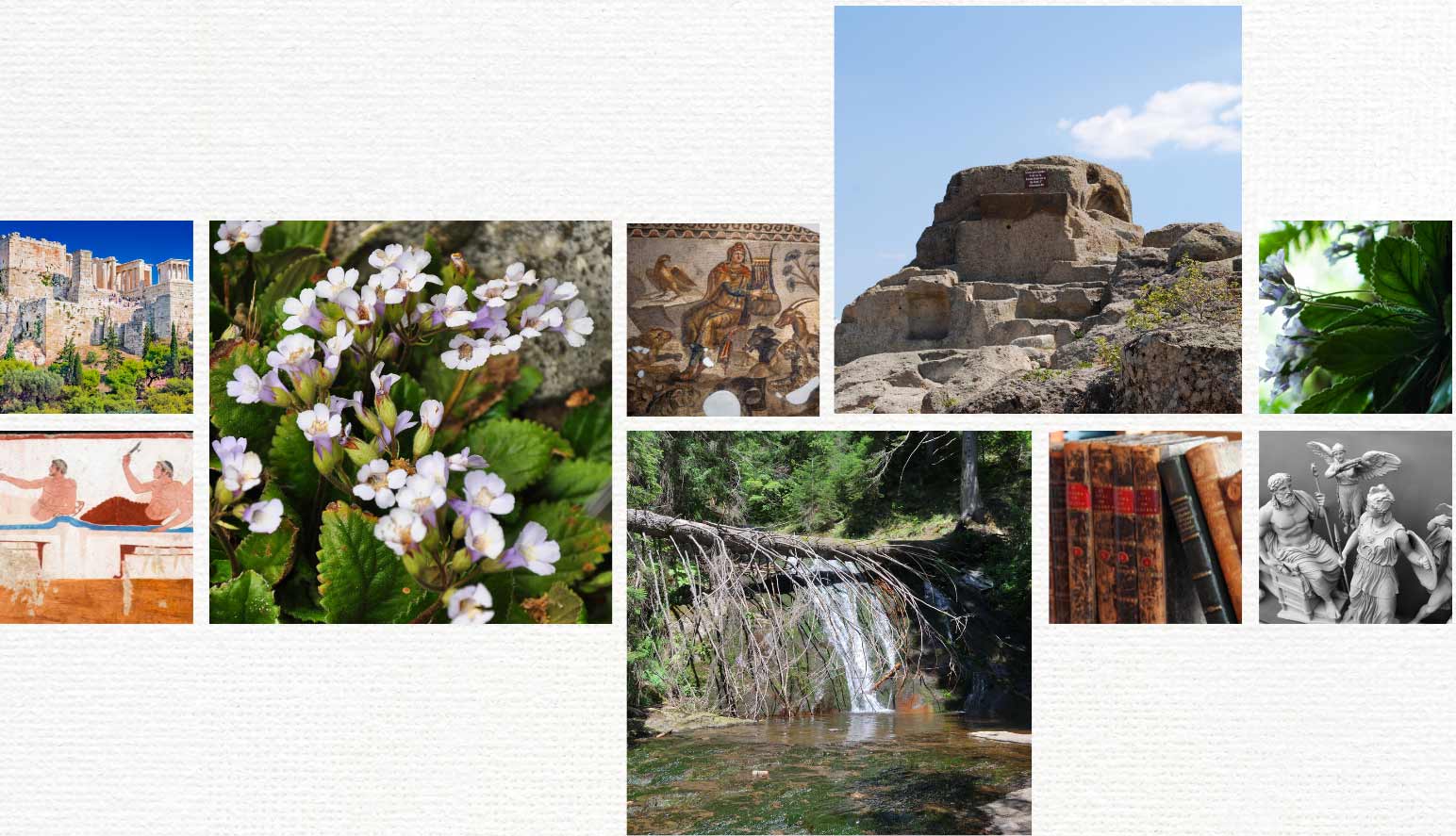Ancient civilizations and the flower of Orpheus
In the Rhodope Mountains grows a mystical flower with violet-blue and white petals, which holds the secret of immortality. Legends connect it with the Thracian Orpheus, who healed with the music of his miraculous lyre, and scientists have long been trying to unravel its secrets to create a medicine for prolonging human life.
The Thracians also knew of the miraculous properties of the Rhodope silivryak, which is why they were healthy and long-lived. Orpheus passed down his healing recipes with the flower to future generations. Later, the Romans came to the Rhodope Mountains to worship it and drink from the divine ambrosia, made with Orpheus’ flower only by the local Thracians. Even the Roman emperor Antoninus Pius (138-161 AD) minted coins with the image of the Rodopi mountain as a beautiful woman, lying on a rock and holding the symbol of the Rhodope Mountains – the Orpheus flower in her hands. For centuries, girls made wreaths and gave bracelets for health and love, believing in the magical powers of the immortal flower. And even today, local people use it for healing, making ointments for wound healing, joint and knee pain.
Somehow the immortality herb, or the so-called Orpheus flower, is believed to be the basis of the ancient recipe for Tibetan youth tea that has reached us. It was found in a Tibetan monastery and is written on a clay tablet dating back to the 6th century BC. The monks claim that it can restore youthfulness. It is believed that the people of Tibet are descendants of ancient people and keepers of mystical secrets. Legends say that they possess vast knowledge, which gives them power over life and death.


